Wow, the countdown has begun! I will be back in America in about 3 months, but only about 2 months of Ukraine left! The last two years have gone by faster than I ever thought possible. While there have been weeks that have seemed to slowly struggle along, months seem to flash by.
As I think I said last year at about this time, summer in Ukraine is amazing. My sister had decided to come visit Ukraine last June, and she had talked to my parents about their trip to Lugansk, and they had said that it was kind of dark and depressing, so it was great to hear Morley say, “Lugansk is not so bad” by the end of the trip. Of course, it helped that the weather was beautiful every day and we saw a bit more of the country then when my parents visited. The rest of the summer was again spent traveling around the country doing summer camps. There were 4 camps, in 4 different parts of the country, lasting a total of 6 weeks, so my summer was over before I knew it. The camps were great, and made me realize that it is something I really enjoy doing, and may try to pursue a career in environmental education or something else working with kids in the outdoors.
As my time is coming to an end, I had a look back at projects I wish I had started, or lesson plans I wished I had made better, but overall, I am still satisfied with the work I have done and hope that at least a few Ukrainians feel the same way. As I am sure you realized, I have been able to travel a lot Ukraine doing different camps and seeing different volunteers. One place I had not had the chance to visit was Crimea, which, besides Lviv and the Carpathian Mountains, is one of the most highly suggested places to visit in Ukraine. Because it takes 18 hours just to get there, it isn’t simply a weekend trip. I had a few offers to go with different people, including my counterpart and her family, but hadn’t followed through on these plans, so didn’t think I was going to have a chance. But about a week ago my friend Brad, another volunteer who lives close to Lugansk said that he had plans to go to Crimea for a week and try to see some of the sights down there.
I decided to tag along; so we took the long, slow train ride down to Simferopol, the capital of Crimea, which is its own autonomous republic , meaning that it is still part of Ukraine but has a lot of its own laws and keeps to itself a lot. We hopped off the train and were struck by how many people there were. We had thought that half-way through September there might be less people, and if this was true, I would hate to be there when there are a lot of people, it was crowded. Brad and I both agreed we needed to get out of there as soon as possible so we hopped on the 1st bus we could find to Kacha, the town we were going to stay at for the week. We had to stand the entire hour and a half, but it wasn’t too bad. We arrived in Kacha Saturday afternoon and Yuri, our contact in the town showed us a bit around. Kacha used to have a Russian Air-Force base until last year. Our ‘hotel’ was about a 10 minute walk to the Black Sea, and about a 45 minute bus ride to Sevastopol, which is where the Black Sea Fleet is based. (The Russian fleet that patrols the Black Sea, and which Russia rents part of the Sevastopol Bay from Ukraine. It is an area of dispute for many Ukrainians since the mayor of Moscow even said that Sevastopol still belongs to Russia. There are Russian sailors all over the streets and Russian flags flying everywhere.)
Saturday afternoon Brad and I went and got some lunch at a restaurant overlooking the sea, then went down and swam a bit. The water was pretty cool, but since everyone said it was supposed to be cold all week we felt pretty lucky that it was 80 degrees, and so the water felt good. Sunday we headed into Sevastopol to meet up with another volunteer who lives just outside the main-part of the city. We first headed to a panorama of the Crimean War which was fought in the mid 19th century between Russia and a coalition of Turkish-British-and French soldiers. Even though it was all in Russian, with the help of Brad’s wonderful translations and the occasional English plaque I learned a lot about something I had no real previous knowledge. It was an incredibly bloody battle and many poems and books have been written about it. We went to a wonderful Tatar restaurant (an ethnic group specifically from Crimea, which Stalin tried to purge over 2 million of them in the 1950s,and only 200,000 of them still remain in Crimea) and then walked around the city and saw a bit of the port and the Russian ships stationed there.
Sunday morning Brad and I got on a bus to Bakchisarai, a town about an hour north of the sea, which holds one of the largest Tatar palaces in the world. It was really interesting learning about the khans (Tatar kings) that had lived there and how they had shaped Crimea’s history. We walked 45 minutes up a rode to try to find the path up to a very famous fortress that is built on top of a huge bluff and is riddled with caves. After a very hot walk up and a few unexpected ticket booths we got up to the top and were treated to some incredible views of the valleys around us. Overall it was a wonderful day, even though Brad and I both were pretty tired by the end of the day. Tuesday morning we woke up early and jumped on a bus to Yalta, which is probably the most famous city in all of Crimea. Yalta is one of the most popular resort towns in Crimea, and just driving along the spectacular coast-line rode with sheer cliffs to your left and right, you could see huge hotels which reminded you of any other beach-town in the world. It made it hard to remember that Ukraine is still a developing country.
We got off the bus and hiked straight down a hill to find the Livadia palace, which is famous for two reasons. One, it is where the Romanovs ( the ruling family/Tsar in Russia from the 17th-early 20th century) held their summer residence, and where the Tsarina went to get over TB. The upper part of the palace is dedicated to their memory, and it was interesting to see pictures of Tsar Nicolas II and Alexi his son, as well as pictures of many of the royal families throughout Europe which in those days all seemed to be related. (King George and Tsar Nicolas were cousins and the Kaiser of Germany was their uncle.) The lower part was dedicated to the Yalta conference, which was where Roosevelt, Churchill and Stalin met in February of 1945 to decide what would happen to post-war Europe. This is the main reason why I wanted to see the palace, and was very interested to see the way everything was set up. There were pictures everywhere of the conference, and many of the rooms were set up the same way they were during the conference. The 3 representatives of the different countries all stayed in different palaces near Yalta, but Roosevelt stayed in the Livadia, so there was a lot of information about him specifically. After the palace we went down to a wonderful board-walk that is filled with tourists from all over, and then hiked our way up hill to find Chekhov’s (famous Russian author) Yalta residence. We finally caught a bus back at 7 and were pretty exhausted when we got back to Kacha at 9:30 that night.
Wednesday was spent mostly relaxing and a little more time at the beach.
Thursday Brad and I decided to hop on two different buses to reach a marina town called Balaclava, just south of Sevastopol. Balaclava is famous for 2 things. It is where the term balaclava (like neck-warmers or ski masks you put around you entire head. They were designed by British women who sent them to soldiers stationed there in the Crimean War) came from, and it was the home of a secret nuclear-submarine base during the Cold War. We arrived in Balaclava and decided to hike around and just see what there was to see.
We eventually headed to the submarine base, where we were allowed to just, “walk around.” This is very strange since if you speak Russian you are almost always with a tour group and have to go at their pace, so it’s nice to be on your own.
The submarine base was designed in the 1960s as a secondary-strike response to the American nuclear threat. It was built in the side of a mountain, in the bay of Balaclava. There are two entrances, so the submarine could go in one door, have repairs done or missiles put on board, and then go out the other door. It was also built so that an entire group of workers and military personnel could live there for up to a month in case of a nuclear strike. It was very interesting to see how prepared both sides of the war were for a nuclear attack. The base was only shut down about 15 years ago, so it was interesting to see the pictures from not so long ago.
After lunch, Brad and I decided to hop on a sort of water-taxi (a small boat with a slow engine and some characters for captain/workers) out to one of the most spectacular beaches I have ever seen. The beach was surrounded on all sides with mountains, and when Brad and I decided to walk back to town, we were treated to some of the best views of Crimea there are.
Overall, the trip was amazing, and as my time comes to an end, it again shows me what Ukraine really does have to offer!
Hope to see you all soon,
Seth
Subscribe to:
Post Comments (Atom)


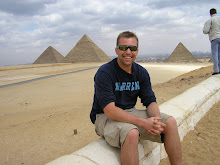

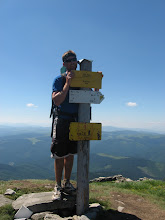

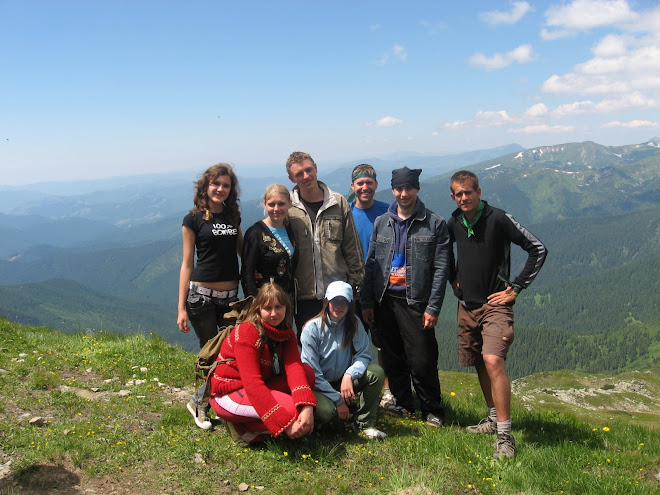

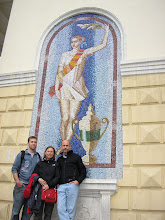


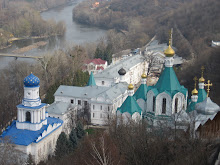
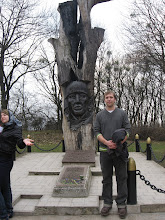
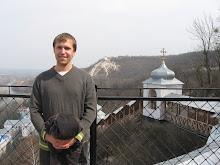
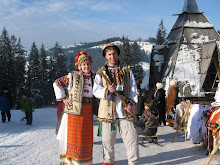



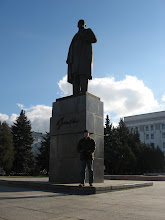

No comments:
Post a Comment